Leak Testing: A Comprehensive Guide
Leak testing is a critical procedure used by inspectors to determine whether an object or system is functioning within acceptable leak limits. It plays a vital role in ensuring the safety, efficiency, and reliability of various systems and components that contain liquids or gases.
When a defect such as a crack, hole, or weak seal exists in a container, it can allow the contents to escape, leading to potential failures, safety hazards, or performance issues. Leak testing uses pressure to detect these defects, enabling maintenance teams to identify and address problems before they escalate.
This method is commonly applied to objects designed to hold or transport fluids, such as pipes, valves, containers, and medical devices. By identifying leaks early, companies can prevent costly damage, ensure compliance with regulations, and maintain product quality.
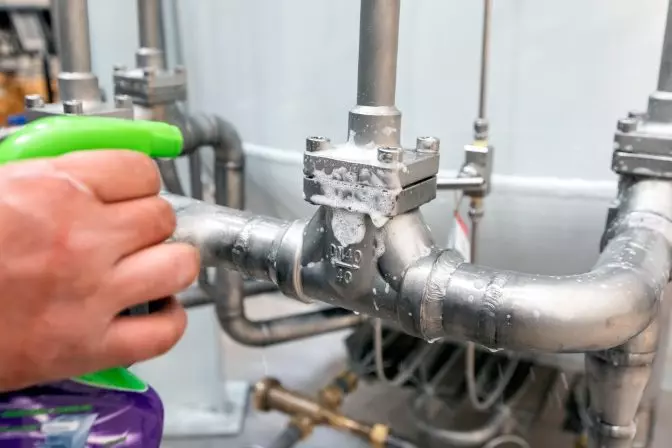
Leak testing is one of the most widely used non-destructive testing (NDT) methods. Unlike destructive techniques, NDT allows inspectors to evaluate components without altering or damaging them, making it ideal for regular maintenance and quality assurance processes.
[Non-destructive leak testing is just one of many NDT methods. To learn more about NDT, check out this detailed guide.
Understanding Leak Testing
At its core, leak testing involves using pressure to detect flaws in a system that may cause leakage. The basic principle is that substances will flow from areas of higher pressure to lower pressure. Inspectors exploit this natural behavior by applying controlled pressure and monitoring for changes that indicate a leak.
Leak testing is typically performed on closed systems where the presence of a leak could compromise integrity. The effectiveness of the test depends on the material and design of the object being tested. Some materials may be more sensitive to pressure than others, which can influence the testing approach and results.

Common defects that leak testing aims to identify include cracks, holes, and weak seals. These imperfections can lead to loss of fluid or gas, which may result in operational inefficiencies or even catastrophic failure in high-risk environments.
Industries that rely heavily on leak testing include automotive, consumer goods, medical devices, packaging, and sealed electronics. In each of these sectors, maintaining the integrity of systems is essential for performance, safety, and regulatory compliance.
Advancements in Leak Testing Technology
Recent technological innovations have significantly improved the accuracy and efficiency of leak testing. Advances in sensors, microchips, and valves have made it possible to detect even the smallest leaks with greater precision. These improvements have also enabled faster testing cycles, reducing downtime and increasing productivity.
The integration of the Internet of Things (IoT) has further enhanced leak testing capabilities. With IoT, inspectors can now collect, monitor, and share data remotely, allowing for real-time insights and quicker decision-making. This connectivity also enables collaboration among engineers, managers, and other stakeholders, improving overall asset management and maintenance planning.
Common Leak Testing Methods
There are several methods used in leak testing, each suited to different applications and requirements:
-
Burst Test: This method applies increasing pressure until the component fails, helping to determine its structural limits.
-
Chamber Test: Used for sealed systems without access points, this method detects leaks by monitoring pressure changes in a controlled environment.
-
Pressure Crack Test: This method identifies small leaks in valves by monitoring downstream pressure changes.
-
Pressure/Vacuum Test: Involves pressurizing a system and comparing it to a reference volume to detect leaks.
-
Pressure Decay Test: Measures pressure loss over time to identify leaks in a pressurized system.
-
Vacuum Decay Test: Similar to pressure decay, but uses negative pressure instead to detect leaks.
-
Occlusion Test: Detects obstructions in gas flow paths that may indicate a leak.
Most leak tests use low pressure, typically at least 15 psi or 25% of the design pressure, whichever is lower. This ensures safety while still providing reliable results.
Key Considerations in Leak Testing
While leak testing is a powerful tool, it comes with unique challenges that must be carefully managed. Here are some important factors to consider:
Acceptable Leak Rate
Different industries have varying standards for what constitutes an acceptable leak rate. Understanding these thresholds helps inspectors decide when maintenance is necessary and when a leak can be monitored over time.
Manufacturing Purpose
The original function of the object being tested should guide the testing process. For example, a component designed to allow gas flow may not require the same level of tightness as one intended to be completely sealed.
Material Properties
The material of the object can affect how it responds to pressure. Brittle or malleable materials may expand, contract, or deform under stress, which could impact the accuracy of the test.
Medium Characteristics
The substance being contained—whether liquid or gas—also plays a role. Different media have different molecular sizes and behaviors under pressure, which influences the type of leak that can occur and how it is detected.
Leak Testing Equipment
Various tools and instruments are used to perform leak tests effectively. Here are some common examples:
Air Leak Detection Devices
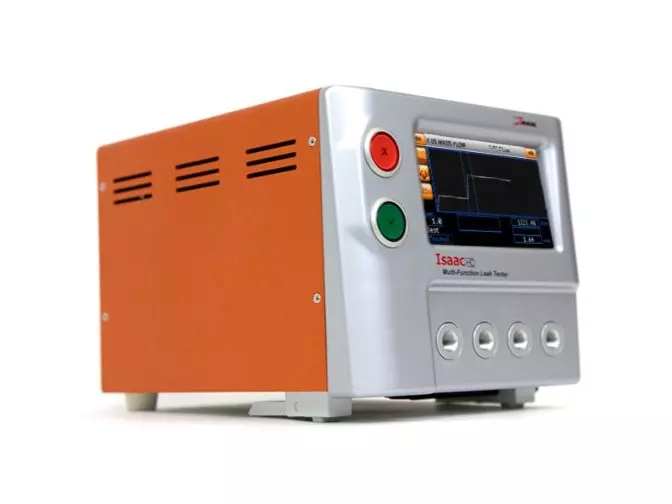 Photo credit: Zaxis
Photo credit: Zaxis
Air leak detection devices provide real-time data during testing, making them versatile for multiple methods, including vacuum decay and pressure decay tests.
Compact Pressure Decay Leak Tester
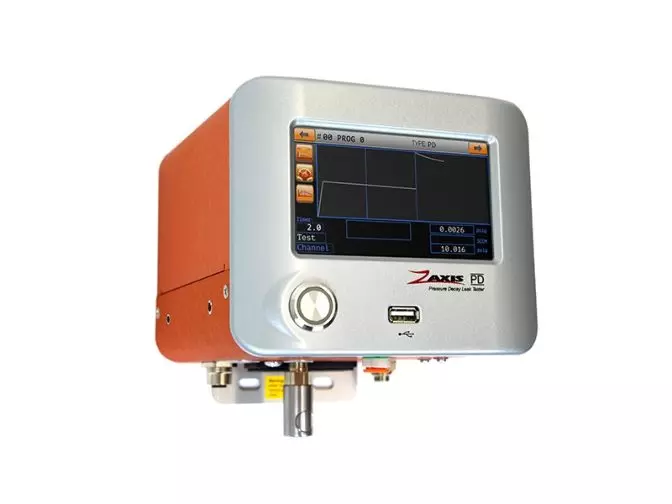 Photo credit: Zaxis
Photo credit: Zaxis
This compact tester reduces connection volume, increasing sensitivity and decreasing test time, making it ideal for precise leak detection in tight spaces.
Large Display Leak Tester
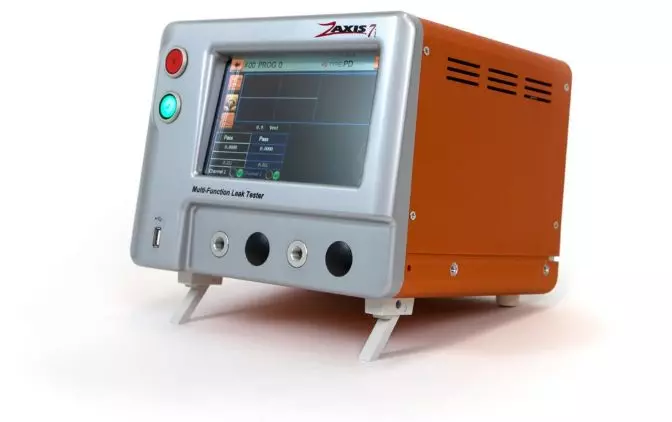 Photo credit: Zaxis
Photo credit: Zaxis
Larger display testers offer enhanced features like bigger screens, increased internal capacity, and faster testing speeds, making them suitable for complex or high-volume applications.
Leak Standard
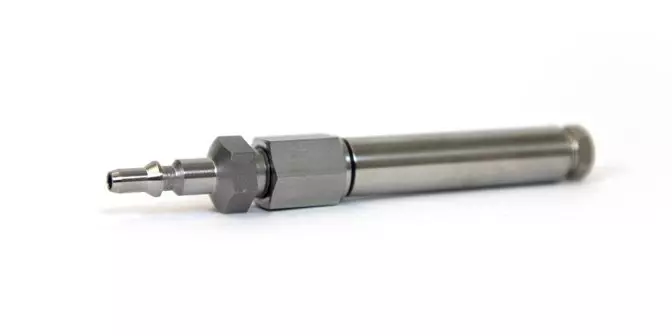
Photo credit: Zaxis
Leak standards help calibrate testing equipment and define acceptable leak parameters, ensuring consistency and accuracy across different testing scenarios.
Leak Testing Standards and Codes
Leak testing is governed by a variety of industry-specific standards and codes to ensure consistency and reliability. These standards provide guidelines for testing procedures, equipment calibration, and acceptable leak rates.
Some of the most widely recognized standards include:
ASME (American Society of Mechanical Engineers)
- ASME B31.3: Pressure Testing and Leak Testing Requirements for Process Piping
ASTM (American Society for Testing and Materials)
- ASTM E432-91(2017)e1: Standard Guide for Selection of a Leak Testing Method
- ASTM E493 / E493M - 11(2017): Standard Practice for Leaks Using the Mass Spectrometer Leak Detector in the Inside-Out Testing Mode
- ASTM E499 / E499M - 11(2017): Standard Practice for Leaks Using the Mass Spectrometer Leak Detector in the Detector Probe Mode
- ASTM E1003 - 13(2018): Standard Practice for Hydrostatic Leak Testing
- ASTM A1047 / A1047M - 05(2019): Standard Test Method for Pneumatic Leak Testing of Tubing
- ASTM E1603/E1603M-11(2017) Standard Practice for Leakage Measurement Using the Mass Spectrometer Leak Detector or Residual Gas Analyzer in the Hood Mode
- ASTM F2164 - 21: Standard Practice for Field Leak Testing of Polyethylene (PE) and Crosslinked Polyethylene (PEX) Pressure Piping Systems Using Hydrostatic Pressure
- ASTM F2786 - 16(2021): Standard Practice for Field Leak Testing of Polyethylene (PE) Pressure Piping Systems Using Gaseous Testing Media Under Pressure (Pneumatic Leak Testing)
- ASTM E2930 - 13(2021): Standard Practice for Pressure Decay Leak Test Method
- ASTM WK76995: New Practice for Field Leak Testing of Polyamide-12 (PA12) Pressure Piping Systems Using Gaseous Testing Media Under Pressure (Pneumatic Leak Testing)
ISO (International Organization for Standardization)
- ISO 20484:2017(en): Non-destructive testing — Leak testing — Vocabulary
- ISO 20485:2017(en): Non-destructive testing — Leak testing — Tracer gas method
- ISO 20486:2017(en): Non-destructive testing — Leak testing — Calibration of reference leaks for gases
- ISO 27895:2009(en): Vacuum technology — Valves — Leak test
Astm A790,Duplex Pipe,Duplex Steel Pipe
Hydrogrand Steel Pipe Co.,ltd , https://www.hydrograndtube.com